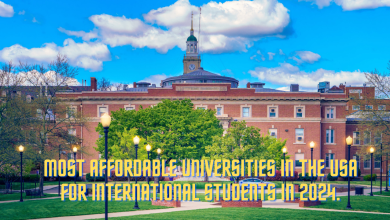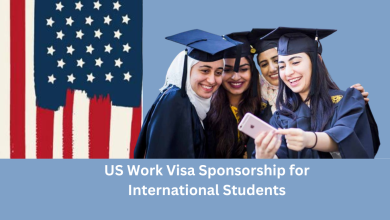How to Immigrate to the US: Your Visa Options and Sponsorship Opportunities

The desire to live in the United States remains high among people from other countries, as it provides a chance to improve their livelihood, find a job, and receive education. Nevertheless, immigration in the United States may be challenging at times due to many available visas, and sponsorship advertisements depend on the circumstances.
If you are a student wanting to study in the US, a working professional or a person who has relatives in the country, it is important to understand the visa possibilities. In this article, we try to explain basic categories of visa and sponsorship options that can help anyone who wants to make this transition. After reading this guide, you will know the steps that would enable you to accomplish your dream of migrating to the United States of America.
The Top 3 Types of Visa Opportunities
1. Family-Based Immigration
Family based immigration is one of the largest categories in immigration to the United States and to get a visa and later a green card. One can also apply for immigration through a loved one as everybody desires to have close ones around, friends or relatives who are citizens of the United States of America or even permanent residents of the country. This process consists in an initial step where your relative has to file a petition for you and in the second step you can apply for a visa.
There are two main categories of family-based visas: source of closest related Immigration Preference Categories; and sides of the immediate relative or family members. These are the first-tier relatives; they are spouses, unmarried children below the age of twenty-one years and parents of the US citizens.
Unlike most of the visas, these visas are not restricted by any specific number for the year and therefore can be processed within the shortest time. On the other hand family preference categories embrace more distant relatives like adult children and siblings and are likewise capped meaning people can wait for quite sometime before being issued with these visas.
The unique feature of family immigration is that you can join your close ones in the USA and at the same time, you are aware of the ways to get the green card. But it is worthy of note if one takes time, especially if one is within any of the preferences, as these differ with country of origin and the particular preference category one seeks.
2. Employment-Based Visas
The other category of immigration by green cards is through employment and this is another common cause of green card immigration. These are employment-based visas granted by an employer in the United States and they are further grouped in categories on the type of job, skills needed or the candidate’s qualifications.
The best-known employment-based immigration is the H-1B visa, which has been created to help foreign Workers in Specialty Occupations with a Degree Required. Like in the case of any other US visa, H-1B visa is acquired on basis of an employer’s offer to hire you in the United States. Having consulted with the employer you make necessary arrangements and the employer proceeds to file the petition on your behalf. However, H-1B visa is restricted by a yearly quota which means a few are granted during the course of the year and can actually get very competitive at times.
Another option is L-1 visa, which is available to those those who work in executive or managerial capacity. This visa enables the company with an international presence to bring employees from overseas offices to the company’s offices in the United States of America. The L-1 visa is especially helpful for those involved in business for multinational companies and wants to continue with their jobs in the US.
Other class of temporary work visas include the H-1B visas for specialised workers, H-2B for temporary workers in low skill sectors and the J-1 for intra-company transfers or exchange programmes while for employment immigrants, there are three employment-based green cards, namely; the EB-1, EB-2 and the EB-3. These categories are determined by your skills, the job offer that you are interested in, as well as your extra-ordinary skills or extraordinary abilities in the fields of science, art, business among others. Though, employment based Green card process is comparatively more complex, yet there is an advantage of getting a permanent residence status in the United States of America.
Employment-based visas provide people with a clear opportunity to live in the US and work for an American employer with the possibility to gain a green card and, in further stages, citizenship. However, the process may prove challenging and competitive and hence requires strategic planning and time consideration..
3. Student and Exchange Visitor Visas
For people seeking to learn or to attend a exchange program in the United States, there are two dominant visa categories: the F-1 and the J-1 visas. These visas permit a person to be in the US for educational purposes or for cultural exchange and other programs and sometimes they help one get employment in the future.
As mentioned earlier, the F-1 visa holder is limited to engage himself in a full time institution of learning be it a university, college or a high school. An F-1 student can remain in the United States legally until the completion of the course provided by the school or university; I am also allowed to engage in practical training programs such as OPT or CPT in which I am allowed to work in places related to my field of study. Some of these opportunities not only make me enrich my education but they can serve as a spring board to get a work visa or green card after getting a degree.
Different categories of programs require different visas; while the J-1 visa is utilized for those who are to work or study temporarily in the United States through exchange programs such as interns and researchers. This visa category has therefore gained a lot of popularity among scholars, researchers and professionals seeking for experience in the US. The J-1 visa has some similarity with the F-1 visa, for instance, one can work while in the programme or after the programme but for the J-1 visa, one may be required to go back to your country of origin for at least of two years after programme before you can be allowed back to the United States depending with your visa information as explained above.
The learner may get to experience much when in either of the two visas, F-1 or J-1 and one thing leads to another in the United States of America. Thus, I can improve my education and cultural level as well as prepare the basis for my future job in America using these programs to the full.
FAQs
What is the Difference Between Visa and a green Card
A visa enables a foreigner to be in the United States for a limited period of time for a particular activity such as study or employment while a green card gives a foreigners an immigration permit to reside and work permanently in United States.
This is especially vital bearing in mind that the duration it takes to secure immigration is unclear to many people across the globe.
The period differs with the type of visa to be procured whether it will be a tourist visa or a business visa. Family preferences may take months to years whereas, employment preferences may come with certain period aimed at application like the H-1B. The green card through the diversity visa lottery can also take a few months, for it to be processed.
Is it possible to transform one’s visa status after getting to the United States?
Yes it is possible to switch the visa type like from F-1 visa from student to H-1B working visa given that one fulfills all the laid down requirements and goes through the right process.




